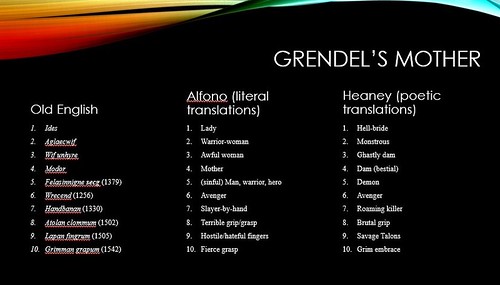Title: Student Research Papers
Length: Over 215 pages
Date Completed: April 21, 2016
33.

Title: [The Island of Doctor Moreau]
Author: H.G. Wells
Genre: Scientifc Romance
Medium: Penguin Paperback
Acquisition: Work Text
Date Completed: April 25, 2016
Rating: *****
34.

Title: Selections from [A Question of Manhood]
Author: Various
Genre: History/Masculinities
Medium: Paperback
Acquisition: IS Final Reading
Date Completed: April 24, 2016
Rating: ****
My chapter choices from A Question of Manhood were directed by personal interest, potential use value for my present project, or the possibility of importance for my ever-looming dissertation. They cover several areas of interest relating to my work, including law and gender, courtship, cultural history, and bodily performance. The first, “For Justice and a Fee: James Milton Turner and the Cherokee Freedmen,” considers an historical conflict of which I knew literally nothing – a dispute over land and tribal rights for the freed African American slaves held by the Cherokee Nation. In this chapter, Gary Kremer tells of a nation within a nation, governed by four social contracts and two governing bodies, and negotiating a system of rights with no precedent. The Cherokee Freedmen want tribal rights and a fair share of land and monies given by the government; the Cherokees who once held the slaves deny their rights to either, and James Turner, an outsider, takes up their mantle and fights with the federal government for their intervention. The whole political and social conflict is nuanced and downright messy, and each decision as the potential to set dangerous precedent.
“Black Policemen in New Orleans During Reconstruction” by Dennis Rousey shares the history of just this – African American men serving in a professional police force at a time when arming their community causes alarm and authority between races is tenuous. Rousey asserts that “The Crescent City’s antebellum tradition in race relation was probably unique,” citing legal circumvention supported by white “employers, policemen, grogshop keepers and professional criminals” for their own purposes and a large Northern population influencing race relations (98). Rousey acknowledges that it is striking to have black officers at all, and further surprising to see them given authority over white citizens, and to see them armed, but that “it became important for the police force to become a microcosm of the whole … community” (99). \
“The African Derivation of the Black Fraternal Orders in the United States,” was not quite what I expected it to be, but rather an explication of the practices and organization of the Independent Order of St. Luke as compared to the social organizations of the Efik and the Igbo of West Africa, justifying the comparison by drawing connections between the American slave trade and these African communities. The chapter itself is a methodical point-by-point analysis of rituals and cultural symbolism, with the goal of breaking the assumption of European heritage in fraternal orders, and illustrating how this American order can in fact be connected to the African communities from which members (or their forefathers) were taken.
Of greatest personal interest were the chapters on courtship and Jackson. In “The Courtship Letters of an African American Couple,” Vicki Howard turns to primary correspondence to evaluate the negotiation of marriage between nineteenth-century African American couples, as they negotiate their roles according to both their own communities (what Howard calls “Black Victoria) and the nineteenth-century cult of Womanhood. The project itself is problematic for its one-sidedness, and the constant necessity of assumption that comes into play when looking at only half of a correspondence (Lucia’s letters have not been saved, while she kept the letters she received from Calvin). A source of discord between the courting couple is Lucia’s desire to continue her education as a teacher, and then to exercise that education professionally; Calvin, also a teacher, initially rejects both desires in deference to the Victorian middle-class cult of womanhood, but eventually yields to Lucia’s desires in order to secure her hand in marriage. Howard speaks of power in this relationship, showing how most belongs to Lucia before they are married, and how Calvin is quick to negotiate when he believes there is a contest for Lucia’s hand. For Lucia’s part, Howard identifies her assertions and desires as exemplary of Black Victoria – a moral but industrious woman who finds fulfillment not just in the home, but in actual occupation that in turn helps to build and support the community.
The final chapter, “Peter Jackson and the Elusive Heavyweight Championship: A Black Athlete’s Struggle Against the Late Nineteenth Century Color-Line” follows the professional career of Peter Jackson from his youth as a sailor to his success as a boxer, and the difficulties he faces in his professional progress due to his race. A superior athlete who first makes his name in Australia, Jackson travels to the United States in order to challenge the title-holder of Heavyweight Champion of the World; John L. Sullivan refuses to cross the color line and meet Jackson in the ring, as do all of the subsequent challengers, literally blocking Jackson from even the chance of gaining the title for himself. David Wiggins details Jackson’s failures with his successes in the ring, narrating his constant and easy successes - and illustrating just why white boxers were afraid to fight him. None wanted to be the champion to lose the belt to him. That Jackson is powerful, skilled, and practiced is never drawn in to question; rather, each rejection is clearly articulated as an upholding of the color-line. Jackson’s failure to achieve the title is not his own, but rather the last front against which these white athletes can uphold their artificial sense of superiority.










